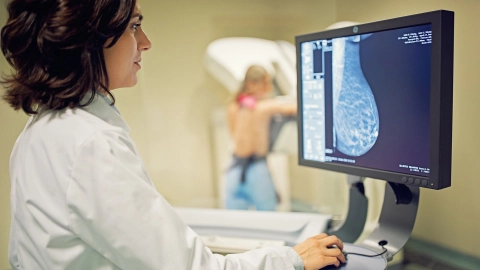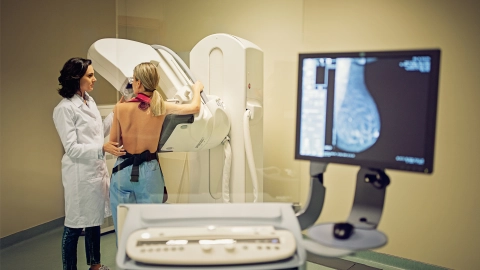ICD-Code C50.5: Malignant neoplasm: Lower-outer quadrant of breast
You have breast cancer.
The tissue in the body is made up of cells. With cancer, the cells multiply uncontrollably, which leads to a malignant neoplasm (abnormal growth of tissue) developing. The cancer cells can destroy the healthy tissue and spread throughout the body.
The breast is made up of fatty tissue, connective tissue and the mammary gland. Milk is produced in the mammary gland during and after pregnancy so that the child can be fed.
In your case, breast cancer has developed in the mammary gland. If you look at the breast from the front, you can divide the breast into four parts – upper inner and lower inner towards the center of the body, and upper outer and lower outer towards the armpit. The nipple is right in the middle. In your case, the breast cancer is in the lower outer part.
Not every cancer is the same. There are cancers that develop quickly. You may then quickly feel seriously ill. But there are also cancers that progress slowly. You may then feel generally unwell or weak, or even have no symptoms at all to start with. With breast cancer, you can sometimes feel a lump in the breast. The skin or the shape of the breast can sometimes also change. Your breast may also become inflamed.
Please note: This ICD code may also derive from the ICD-O system. If this is the case, there are usually additional letters and numbers in addition to the code. It starts with the letter M, followed by 4 digits and then a slash. There is another digit after the slash. If it is an ICD-O code, then this does not describe a malignant cancer in all cases. The last digit after the slash gives you more detailed information about this:
Additional indicator
On medical documents, the ICD code is often appended by letters that indicate the diagnostic certainty or the affected side of the body.
- G: Confirmed diagnosis
- V: Tentative diagnosis
- Z: Condition after
- A: Excluded diagnosis
- L: Left
- R: Right
- B: Both sides
Further information
Source
Provided by the non-profit organization “Was hab’ ich?” gemeinnützige GmbH on behalf of the Federal Ministry of Health (BMG).



